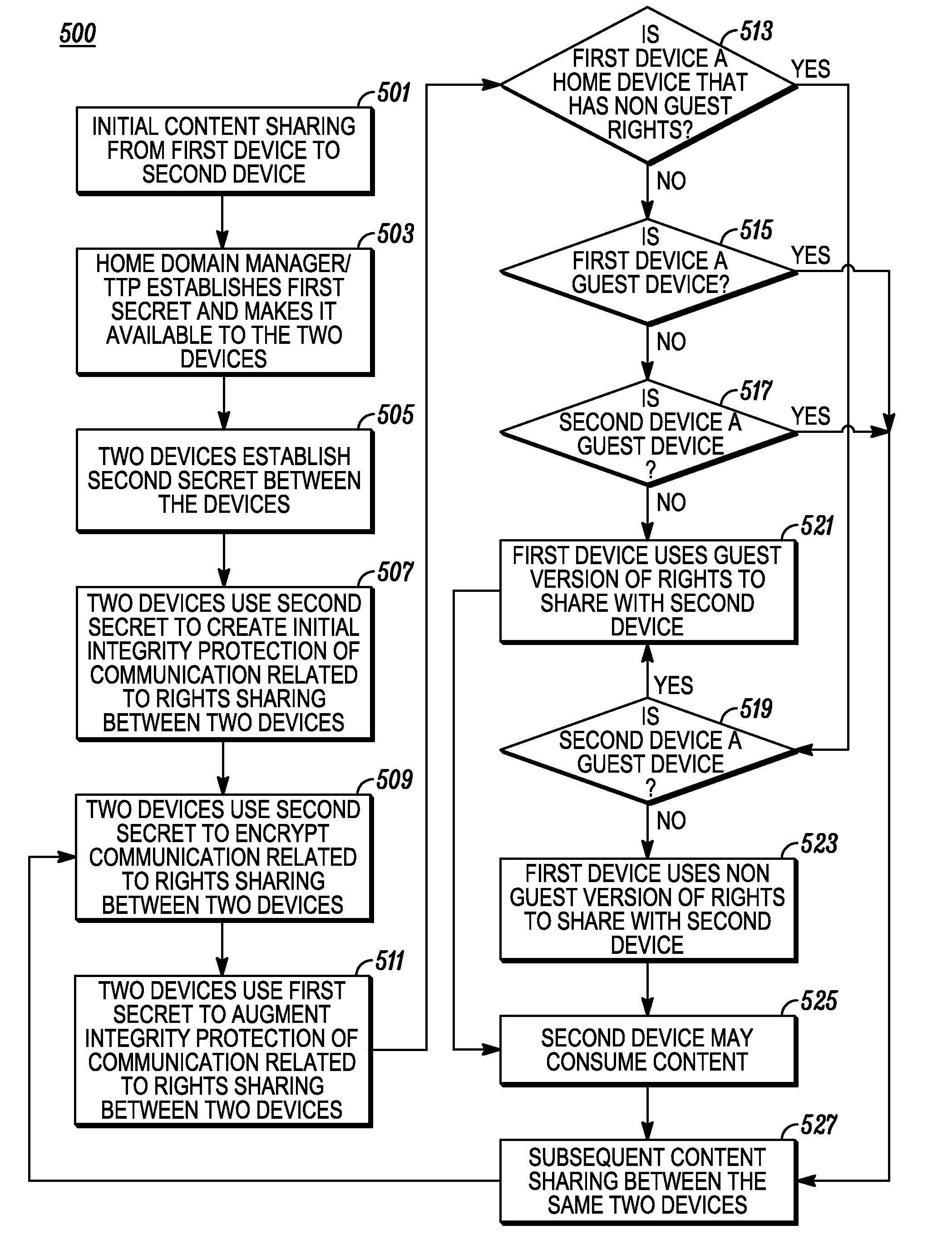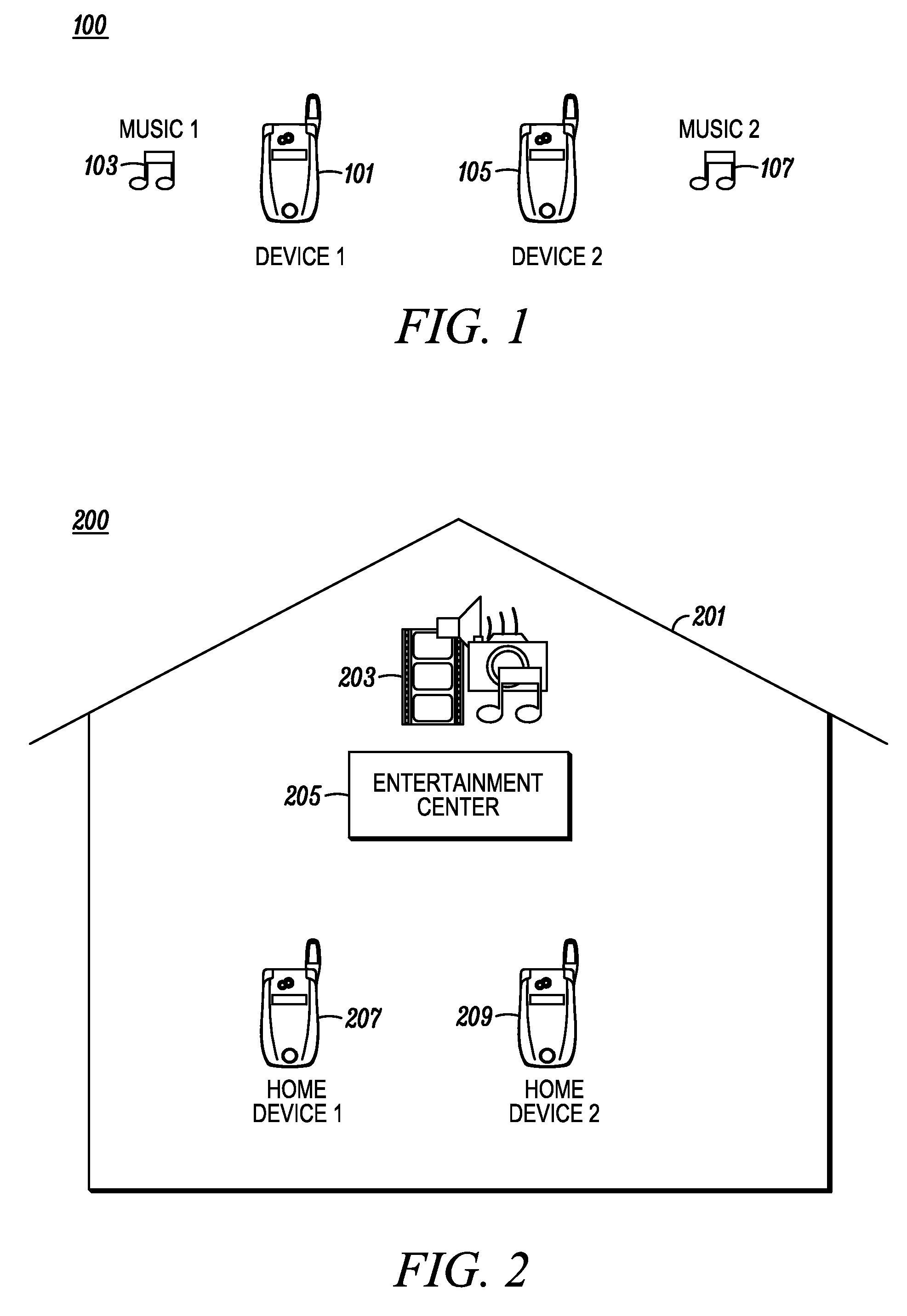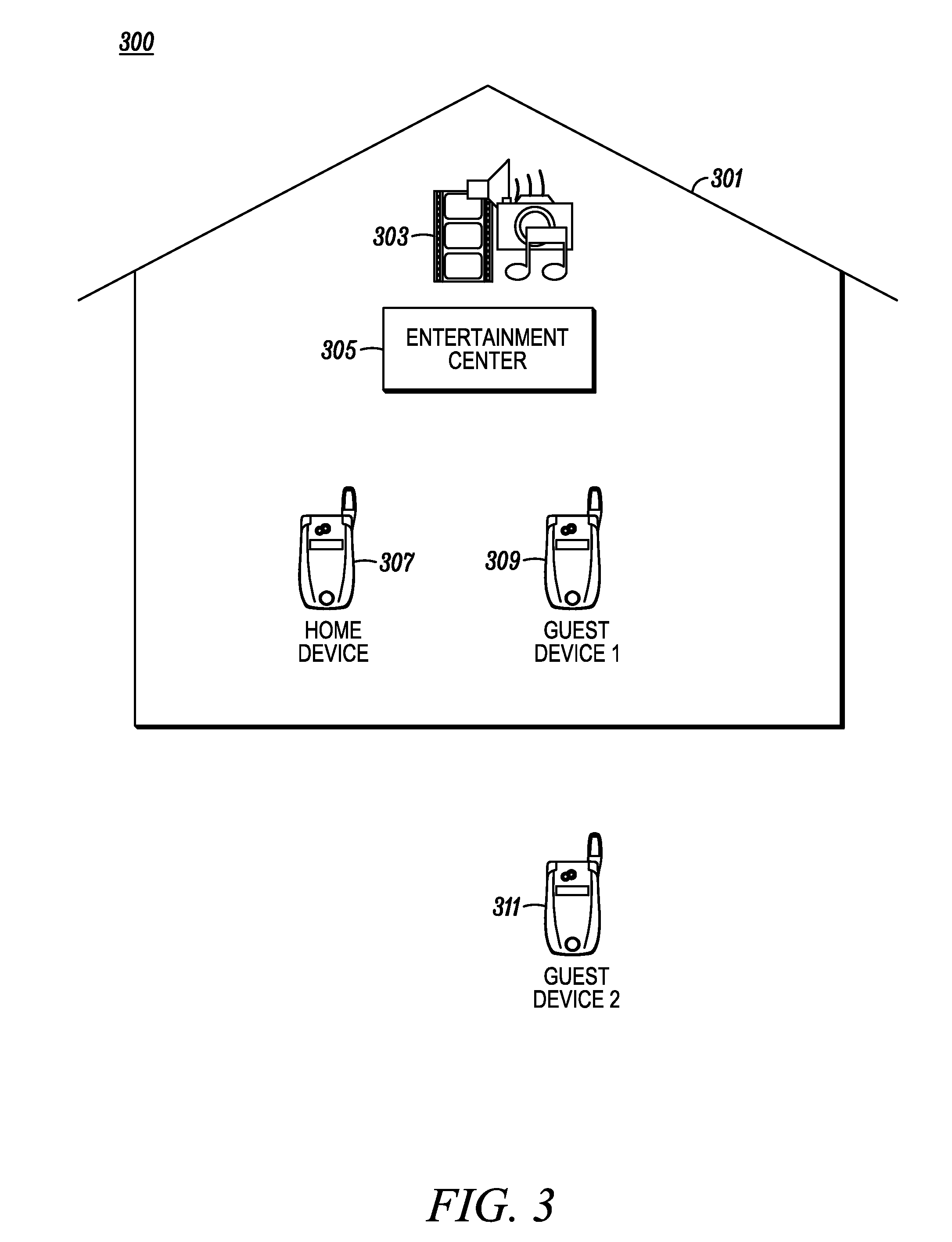System and method to share a guest version of rights between devices
a technology of a system and a device, applied in the field of system and method for sharing a guest version of rights between devices, can solve the problem that current drm systems do not have mechanisms to enable sharing
- Summary
- Abstract
- Description
- Claims
- Application Information
AI Technical Summary
Problems solved by technology
Method used
Image
Examples
embodiment 100
[0015]Referring to FIGS. 1, 2 and 3, many use cases may benefit from the system and method for enabling direct sharing between devices, and the figures illustrate same examples. FIG. 1 illustrates an embodiment 100 in which devices may directly share content in accordance with the present invention. For example, two people, each having a device, may meet at a common venue and wish to share rights for one or more selections of content between their devices. A first device 101 belonging to one user may include a first media content 103, and a second device 105 belonging to another user in the same area may include a second media content 107. The first device 101 may provide rights associated with the first media content 103 to the second device 105, and / or the second device 105 may provide rights associated with the second media content 107 to the first device 101. The rights may include requirements, such as allowing for the content to be shared with a finite number of devices.
embodiment 200
[0016]FIG. 2 illustrates an embodiment 200 in which devices belonging to a particular network may share content in accordance with the present invention. A user in a particular venue may have content stored on a media center. For example, in one's home 201, a video content 203 may be stored on component of an entertainment system 205. If the user wants to view the video content 203 on a handheld device 207, 209, then the system may transfer the video content, or a copy thereof, from the component of the entertainment system 205 to a handheld device. The rights for the video content 203 may include requirements, such as dictating that the video content may be shared only among devices that belong to a home network of the home 201 and not with devices that do not belong to the home network.
[0017]FIG. 3 illustrates an embodiment in which content may be shared, on a limited basis, with a device that does not belong to a particular network in accordance with the present invention. Again,...
embodiment 400
[0019]Referring to FIG. 4, the secure authenticated channel (SAC) may be applied as described below. For this embodiment 400, a first SAC 401 may be established directly between two devices 403, 405. For example, the first SAC 401 may be established by re-using the same SAC method used in OMA SRM. This first SAC 401 may be modified so that the cryptographic integrity of the data used in communicating rights between the two devices 403, 405 may become based on a secret key or keys communicated from a trusted-third party (TTP) 407 or a home domain manager 409 to the two devices 403, 405. Such communication of keys may be directly between the TTP 407 or the home domain manager 409 and each of the two devices 403, 405, or via a combination of direct and relayed communications. The keys cryptographically protect the content decryption keys and rights associated with the content. Such decryption keys and rights may be issued by a rights issuer 411 or the home domain manager 409. The decry...
PUM
 Login to View More
Login to View More Abstract
Description
Claims
Application Information
 Login to View More
Login to View More - R&D
- Intellectual Property
- Life Sciences
- Materials
- Tech Scout
- Unparalleled Data Quality
- Higher Quality Content
- 60% Fewer Hallucinations
Browse by: Latest US Patents, China's latest patents, Technical Efficacy Thesaurus, Application Domain, Technology Topic, Popular Technical Reports.
© 2025 PatSnap. All rights reserved.Legal|Privacy policy|Modern Slavery Act Transparency Statement|Sitemap|About US| Contact US: help@patsnap.com



